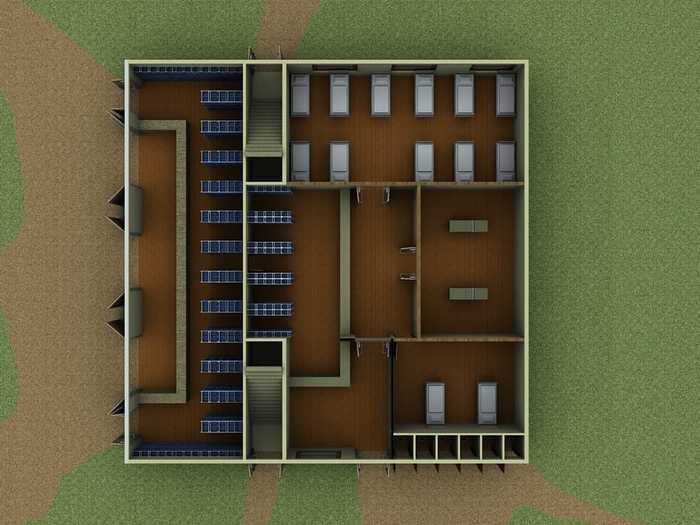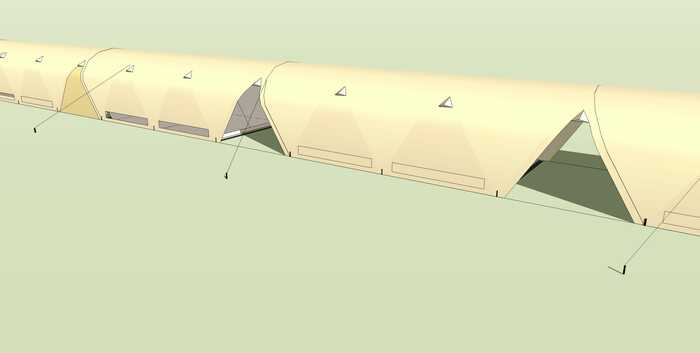
BT in extreme climates
Building Technology in extreme climates and conditions
Extended use: Collective Centre
These courses are all about building technology in extreme climates and conditions. In these climates are many third world countries that are exposed to natural disasters and wars. Due to these disasters and wars their is a huge need for emergency shelters and collective centers. The first course is to research a country's conditions and circumstances and to design a collective centre for a refugee camp. The University of Technology Eindhoven has developed a Rapid Deployable Collective Centre that is placed after a disaster or war in a refugee camp. The assignment is for the collective centre after the post-disaster phase. The assignment was: Make a proposal for the terms of reference, design and engineering for an extended use of a collective centre taking into account social, cultural, financial, geographical, functional and technical constraints.

The research was based on the country Angola, this country is in a phase after a civil war. The extended use for the collective centre was based on a refugee camp with 20.000 refugee's. The truss beams of the collective centre are used in the new design for the extended use of the collective centre. The other materials used are local materials. The design has a food bank and a hospital on the ground floor and a school on the first floor. These are the basic functions to start with a new future for the refugee's.
The design is fully described in the report.
Post Disaster: Rapid Deployable Emergency Shelter
This course is about the first aid after a disaster has struck. The red cross is doing research in rapid deployable emergency shelters and has the University of Technology Eindhoven as a partner in the innovative research. This assignment is part of the research of the TU/e to these shelters. Their were three types of assignments:
1. Design a system for the climatization of existing emergency shelters (e.g. the UNHCR – RC all weather tent) based on recycled clothing textiles. Please develop a system that is applicable for multiple climates and preferably multiple tent types.
2. Design a new rapid deployable emergency frame type shelter, fully manufactured of recycled textile materials (including the frame!). Rapid and easy deployability is a key aspect for quick relief of a large number of refugees. Because of the vast number of tents needed (ca. 20.000 in one batch) instantly, the packaging and weight must be very efficient.
3. Design of a innovative Hard shell ‘emergency to transitional shelter’ manufactured of recycled textiles. The shelter has to be consist of stiff panels, that also function as structural system when completed. The shelter type should be extendable and upgradable in time to a semi-permanent shelter solution. Because of landownership issues, the full shelter must be dismountable and relocatable. The hard shell panels functions both as structure and cladding. Smart coupling of panels and a modular design is highly recommended.
The design was based on the second assignment. For the rapid deployable shelter a container is commonly used, for the transportation. This container is used as the base of our new rapid deployable shelter. The design is based on a row of tents that works lika an accordeon. This makes the tents connected and does not take much space in the container. The container has a toilet and storage of food. The container with the connected tents forms a small community in the large refugee camp.
Further details are in the report
